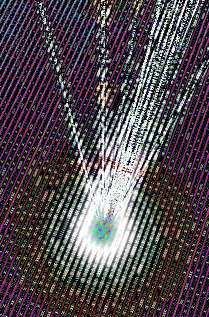Next-gen tech tested
 Local scientists are working on 6G communications technology.
Local scientists are working on 6G communications technology.
A team at the University of Adelaide has developed a new polarisation multiplexer that could double the data capacity of wireless systems by allowing multiple data streams to be sent over the same frequency band.
The new technology uses terahertz frequencies, which will be the standard for 6G communications and are much higher than those used in current 5G networks. 6G will rely on these higher frequencies to deliver faster data speeds and support more devices.
The polarisation multiplexer developed by the team improves how the terahertz spectrum is used.
It can send multiple data streams over the same frequency band, doubling the amount of data that can be sent at once.
This is important for the next generation of technologies, which aim to offer faster, more reliable wireless communication for things like augmented reality, AI, and smart cities.
Tested in the sub-terahertz J-band (220-330 GHz), the device operates at terahertz frequencies.
To overcome the challenge of managing the available bandwidth efficiently, the team’s multiplexer, implemented on a substrateless silicon base, uses polarisation to separate data streams.
“Our proposed polarisation multiplexer will allow multiple data streams to be transmitted simultaneously over the same frequency band, effectively doubling the data capacity,” says researcher Professor Withawat Withayachumnankul,
He said the new technology provides a record-breaking large relative bandwidth for any integrated multiplexer, allowing for much faster communication with reduced data loss.
“This innovation not only enhances the efficiency of terahertz communication systems but also paves the way for more robust and reliable high-speed wireless networks,” said Dr Weijie Gao, a postdoctoral researcher at Osaka University.
“This innovation is poised to catalyse a surge of interest and research activity in the field,” said Professor Masayuki Fujita of Osaka University.
The team expects to see more research and applications of this technology within the next two years, with commercial prototypes potentially arriving in three to five years.
“Within a decade, we foresee widespread adoption of these terahertz technologies, revolutionising industries like telecommunications, imaging, radar, and the internet of things,” said Professor Withayachumnankul.
This multiplexer can also be integrated with earlier beamforming devices developed by the same team, enabling even more advanced communication functions.
More details are accessible here.








 Print
Print